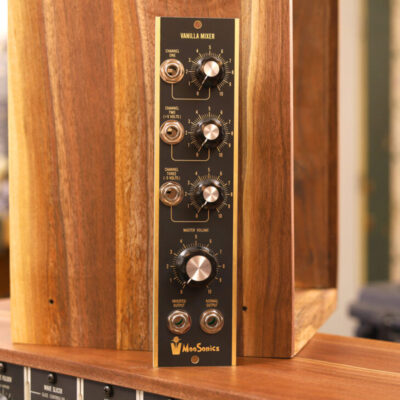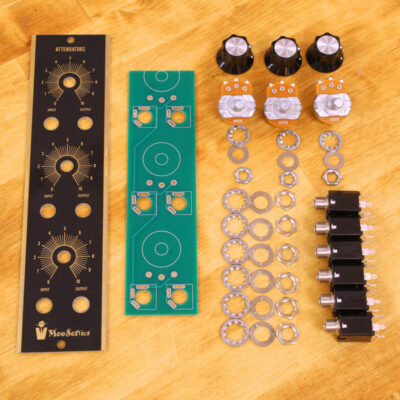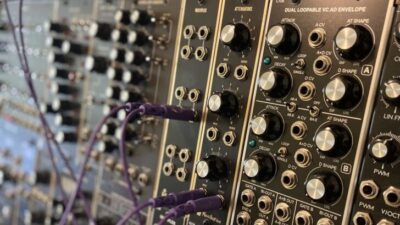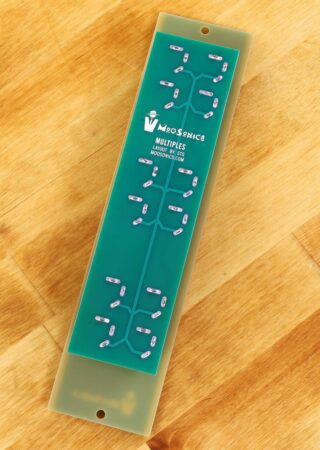STG Soundlabs MooSonics makes Moog Modular Format Affordable
STG Soundlabs and Knobcon founder Suit & Tie Guy has launched a new synth module line, MooSonics, that promises to make Moog-format modules affordable.
One of the key appeals of the Eurorack format has always been its affordability, compared to the larger Moog format. MooSonics challenges that, with Moog-format modules starting at $75 for full DIY module kits.
The name ‘MooSonics’ is a play on ‘muSonics’, the company that bought out the original Moog in the early 1970’s. STG has also previewed an upcoming muSonics line, which promises to offer modern interpretations of classic Moog format modules.
Just as ‘MooSonics’ is a playful take on ‘muSonics’, Suit & Tie Guy is getting creative with the design of the MooSonics line, in order to make it more affordable. A key difference is that the panels are flat and made of printed PCB material. Front panels are the most expensive component of many module designs, so this, and the kit approach, go a long way towards making these modules affordable.
We purchased and assembled MooSonics’ first two module designs – Attenuators and Multiples. They’re both easy DIY projects.
Once installed in a MU system, the panels look and perform comparably to modules from other manufacturers:
The MooSonics modules use modern PCB design, so the assembled modules are only 1″ deep.
Suit and Tie Guy hasn’t shared specs for the line – it may be too early in the process – but it looks like the modules will be very ‘skiff-friendly’, compared to traditional Moog designs and Synthesizers.com designs.
The MooSonics line currently features three modules:
- Attenuators consists of three passive circuits that can be used to reduce the amplitude of any audio or control signal. The signal input to the top attenuator is chained to the bottom two in series. Introduction of a phone plug into middle or bottom input breaks the normalling system: 1 to 1-2-3, 1-2 to 2-3, 1-2-3 to 1-2-3.
- Multiples consists of three sets of four phone jacks. The top left input of the bottom two groups of jacks is normalled to the tips of the group above it, so you can send one signal to a maximum of 9 destinations from this panel.
- The Vanilla Mixer is based on the output mixer of “a certain American two voice synthesizer from the 1970s. If you need a second hint, think of vanilla ice cream.” Suit has added a third channel, an inverted output, and normalised DC offsets, to allow for a variety of voltage processing and tone shaping operations. The DIY build is very flexible, because you can choose which op amps, gain staging, and ac/dc coupling options, to make two completely different mixers. These options are documented on the PCB itself.
The kits should be easy projects for experienced builders, but MooSonics currently does not provide build documentation. PCBs are labeled with all component values and build options, which is all that many experienced DIYers will need.
“There is an assumption that buyers have some experience in building electronic devices,” they note. “If you have no experience, this would be a great place to start, but you will need to do some research on basic assembly techniques.”
Suit and Tie Guy plans to eventually offer all the modules needed to create a complete MooSonics system. Once this is done, he hopes to hold weekend build workshops, where you could build a complete modular system. MooSonics modules are now available in limited quantities, with prices starting at $75 for the kits and $95 for assembled modules.





























